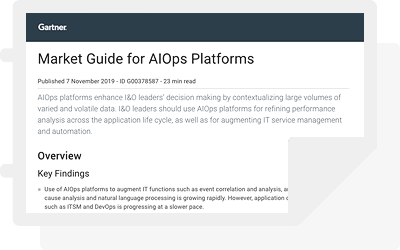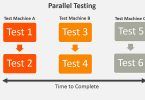Business processes are critical to the smooth operation of an organization, but their repetitiveness and the involvement of several parties leaves them open to errors. To address this challenging area, business process management (BPM) emerged as an organizational discipline that helps companies step back and identify areas in need of improvement. This was followed by the rise of the subsets of intelligent BPM (iBPM) and consolidated intelligent BPM Suites (iBPMSs), which further enrich classic BPM with additional capabilities.
iBPMS platforms provide a single tool allowing you to easily leverage the analytics and intelligence of BPM through the use of the cloud, Internet of Things (IoT) integration, message-oriented middleware, business activity monitoring, artificial intelligence (AI), and more. Through this dynamic technology environment, an organization can plan, automate, and grow its business.
Task vs. Project vs. Business Process Management
Of these three types of management, BPM has the widest scope. Task management only focuses on specific individual tasks within projects that typically only occur once. Likewise, project management looks at the flows of these unpredictable and one-time projects. BPM, on the other hand, tackles ongoing processes throughout an organization. These processes typically follow predictable patterns with repetitive behaviors and events, making AI and automation ideal tools for managing them.
iBPMS Components and Capabilities
At its core, an iBPMS integrates a set of several technologies to coordinate machines, things of the IoT, and people. It primarily relies on rules and models of processes to drive its user interface, managing several work items at once. The overall characteristics of iBPMS platforms include:
- Modeling
- Repository
- Execution
- Rules Management
- Collaboration
- Content Repository
- Integration
- Monitoring
- Optimization
- Administration
Thorough decision models of an iBPMS allow simplification of the environment and aid the integration of machine learning with advanced analytics. The user interface is also crucial in enabling high productivity application development via low-code or no-code tools that anyone can use. In addition to these components, robust application programming interfaces (APIs) allow iBPMS platforms to achieve integration with other external systems.
iBPMS offerings during recent years have also included validation and verification, optimization, and process performance insight capabilities. These allow logical compliance verification as well as process simulations, such as “what if” scenarios, to test the system. Another enhancement to iBPMS platforms over time is the addition of increased support of human collaboration, allowing integration with social media, mobile-enabled processes, and streaming analytics.
The integrated software and full lifecycle support provided by iBPMS tools facilitate the detection, investigation, planning, implementation, and continuous monitoring and optimization of business processes and decisions. Because the tools are integrated and incorporate user-friendly interfaces, both professional developers as well as citizen developers, such as business analysts, can easily collaborate on decisions and development.
Overall Benefits of iBPMS
With the above components, an iBPMS should be easy to use, agile, and provide enterprise-grade performance, needed by changing and growing organizations. Platforms conforming to ease of use standards will make the suite as user-friendly as possible. This usually includes visual drag-and-drop functions with minimal or no code, allowing for quick and easy workflow creation.
With the implementation of AI and the cloud, an iBPMS should increase the agility of an organization when it comes to changing processes. This capacity combined with low-code tools will create a lower dependence on IT departments due to thorough and accessible analytics that help all users make reliable decisions based on data. The iBPMS tools will also increase the speed of the delivery of processes, making it easier to change elements within processes without pausing them.
The primary characteristics of iBPMS platforms are also ideal for contributing to the growth of companies with minimal investment. Due to the cloud-based nature of many of the tools, scaling up does not involve building or buying physical servers, buildings, or other tools.
Primary Applications
The applications of iBPMS tools are relevant in various fields, from healthcare and agriculture to logistics and finance. Any organization or system with ongoing business processes can benefit from the assistance of advanced technology and analytics. iBPMS platforms both support the traditional requirements of BPM, allowing for growth into new areas. Aside from automation (discussed more below), an iBPMS can contribute to expanding the reach of an organization and integrating its various components.
For example, a service extension aimed at mobile users can increase the scope of the iBPMS tool, helping mobile users become more involved in the process. This concept of dynamic collaboration applies to any currently marginalized group that could benefit from integrating into the larger process—whether that’s customers, employees, or other organizations. But the iBPMS will do so in a way that minimizes cognitive overload, only letting parties into the process at the appropriate time.
iBPMS platforms can also provide customized case management strategies that reduce errors and manual interventions. By leveraging cloud capabilities, big data, and strong analytics, these platforms can quickly adapt to new scenarios and sudden changes. Expanding analytics capabilities gives the iBPMS a stronger ability to pick out trends and patterns, leading to fully customized approaches for unique cases.
Another key use of iBPMS tools is the real-time processing of complex events. The powerful processing capabilities stemming from AI and the cloud allow for immediate analysis of the current state of an organization. With this speed, you can quickly become aware of and react to any changes, practically eliminating the need for sending analytics to live support lines.
iBPMS and Hyperautomation
One of the fastest emerging applications for iBPMS platforms is hyperautomation. By making business processes streamlined and easier to manage, iBPMS tools are particularly helpful in cases where companies want to automate end-to-end processes. Hyperautomation accomplishes this through the application of several advanced technologies such as AI and machine learning.
One of the complementing technologies that is ideal for pairing with an iBPMS to accomplish hyperautomation is robotic process automation (RPA). RPA by itself automates business processes and connects legacy systems to more modern systems. The addition of an iBPMS further enhances the abilities of the automation, adding the support, collaboration, and analytics mentioned above.
Hyperautomation is a rapidly growing field, which explains why the market for RPA tools is practically exploding. With enhanced automation capacity, an organization can augment its workers’ mundane and repetitive tasks, opening the door to increased focus on higher-level work.







